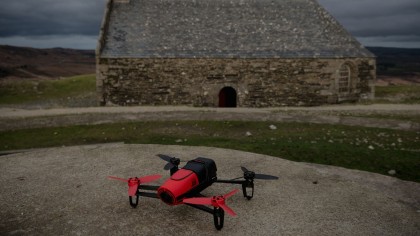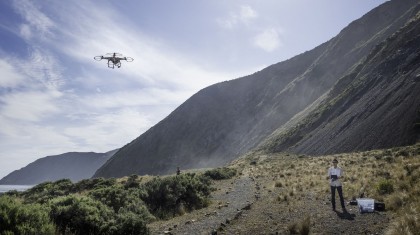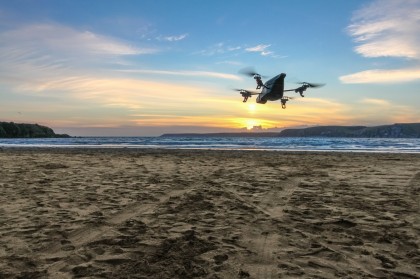Drone laws: what you need to know before you fly
What's legal where you live?

Introduction
The age of the Unmanned Aerial Vehicle (UAV) is in full swing, and the remote aircraft involved have already shown us unforgettable sights, like drone flying through Independence Day fireworks. More poignantly, one conveyed the extent of the devastation to Homs, Syria far more effectively than simple ground-based footage.
UAVs enjoyed a fairly lawless "Wild West" state for years, but many countries have now issued laws that regulate hobbyist and commercial drone flights.
We've compiled a list of the most significant drone laws in the North America, Europe, Australia and New Zealand. Many commonalities exist from region to region, but you'll still want to check more closely before taking to the skies. But note: this is the most up-to-date information we could find, but the laws change often and some of the laws for regions discussed are currently in flux.
Penalties for not following the rules can be harsh. In the US, for instance, you could face a fine of $27,500 if you don't pay the five bucks to register your drone. If you commit a criminal violation, you may end up paying as much as $250,000 and spending as many as three years in prison.
Or take the UK. Last September, a Nottingham man flew his drone over or near multiple English sports stadiums and landmarks like Buckingham Palace, and the police slapped him with a £1,800 ($2,572) fine and ordered him not to own, fly, or even help someone else use a drone for the next two years. Let's hope the shots were worth it.
Image credit: Yann Caradec/Flickr (cropped)

Australia
The land down under remains remarkable friendly to UAVs, even after some clarifications introduced to its policies last year. Indeed, commercial drone users can pilot their crafts without express permission or a license there as long as the craft weighs less than 4.4 pounds (2kg). Still, both civilian and commercial users need to abide by these rules: you have to keep your drones within your line of sight, at least 98.4 feet (30m) from other people, and at least 3.1 miles (5km) away from airports. You'll also need to avoid flying your craft around large groups of people.
Image credit: Ian Fraser/Flickr

Canada
Canadian law essentially allows anyone to fly a UAV as long as the device weighs less than 4.5 pounds (2kg). You'll need to keep it flying below 295 feet (90m), within your line of sight, and well away from airports, populated areas and moving vehicles.
Image credit: Jerseygal2009/Flickr

Continental Europe
The European Aviation Safety Agency (EASA) is currently tinkering with UAV regulations that will affect drone usage in all member states of the European Union, and the current plan marks a shift from much of the rest of the world by focusing on three different types of usage rather than weight.
The "Open Category" is the one hobbyists need to worry about, and it's rather generous, as it focuses on familiar regulations such as staying within the operator's line of sight and away from crowds, airports and other sensitive areas. It'll also limit flights to 492 feet (150m) above the ground. Yet numerous local laws complicate the matter: Germany, for instance, requires the registration of any UAV weighing more than 1.1 pounds (5.5g).
Image credit: Yann Caradec/Flickr (cropped)

Iceland
Iceland's stunning landscapes practically beg for drone photography, but you'll need written permission from the local authorities if you want to fly anything heavier than 11 pounds. Anything below that is fair game as long as you stay at least a mile away from airports and housing. Luckily, both are rare in Iceland.
Image credit: Paul Weeks/Flickr

Mexico
If you plan to fly your drone for commercial purposes in Mexico, you'll need to register it. Hobbyists, though, can fly drones that weigh less than 4 pounds (2kg) up to 400 feet (122m) as long as they stay within the operator's line of sight and don't travel more than 1,500 feet (457m) away.
They're also subject to specific speed limits based on weight and must be made from frangible materials. If it weighs more than 4 pounds, you'll need to keep it confined to a model aircraft club and fly it under 500 feet (152m) and less than 100 miles per hour. In each case, you can only fly your drone during the daytime.

New Zealand
New Zealand has some pretty agreeable laws regarding UAV use, to the point that its existing regulations apply to both civilian and commercial drone flights. You can fly UAVs almost anywhere there as long as they weigh less than 55 pounds (25kg) and you fly them only during the day. You'll also need to keep them within your line of sight and at least 2.5 miles (4km) away from airports.

Russia
Russia's laws look remarkably similar to the United States' recent federal regulations, right down to the need to register drones with a take-off weight of 0.55 pounds or higher. Russia does throw a few of its own requirements into the mix, though, most notably the need to have both a pilot and an observer. In short, if you want to fly a drone in Russia, you'd better have some friends.
Image credit: Tatiana Bulyonkova/Flickr (cropped)

Scandinavia
Both Norway and Sweden have minimal regulations regarding UAVs, with the exception that Sweden requires owners to obtain a permit from the Swedish Transport Agency before using their crafts for commercial purposes. In Finland, you'll only need to register your craft with the government in the unlikely event that it weighs more than 331 pounds (150kg), but anything under that can only fly up to 492 feet (150 meters) and must remain within the operator's line of sight.

United Kingdom
The UK is surprisingly flexible in its UAV regulations, although the specifics differ significantly depending on whether drone weighs less than 15 pounds (7g) or up to 44 pounds (20kg) and beyond. The craft doesn't need airworthiness approval if it weighs less than 44 pounds, but you'll need to check more closely if you plan on taking any photos with your craft. Many of the usual limitations for hobbyists apply: stay under 400 feet (122m) above the ground, stay away from airports, and stay away from large groups of people.

United States of America
Laws regarding UAV use vary greatly from state to state (and from city to city), which makes pinning down some general rules for hobbyists in the US fairly difficult. But here are the broad strokes, following new federal legislation introduced in December 2015.
You now need to register all drones weighing more than .55 pounds and less than 55 pounds with the Federal Aviation Administration. You also need to keep your UAV within your line of sight and keep it under 100 miles per hours and below 400 feet above ground level. As in many other countries, you also need to keep it away from airports and heavily populated areas.
Image credit: CEBImagery/Flickr(cropped)